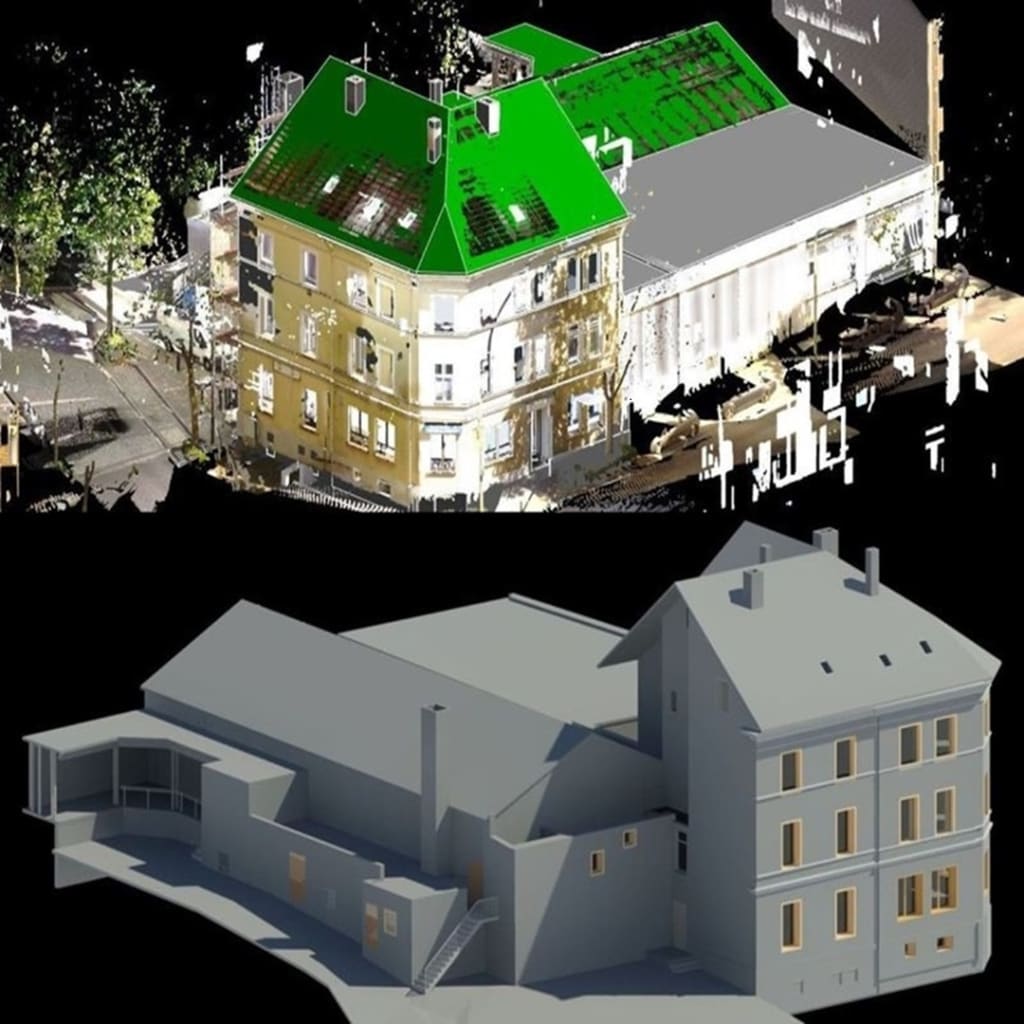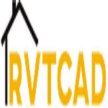Scan to Bim Process 3D Laser Scanning for Bim | Rvtcad
Scan to Bim Process 3D Laser Scanning

Building Information Modeling (BIM) has revolutionized the construction and architectural industry. One of the key advancements aiding this transformation is the integration of 3D laser scanning into the BIM process. This technique often referred to as "Scan to BIM," allows for precise digital representation of physical spaces, enhancing accuracy, efficiency, and collaboration across various project stages. In this article, we will explore the Scan to BIM process and its significance, focusing on how 3D laser scanning facilitates this transition.
What is Scan to BIM
Scan to BIM is a process that involves capturing a physical space or building using 3D laser scanning technology and converting the data into a detailed and accurate BIM model. This model can be used for various purposes, such as design, construction, renovation, and facility management.
How Does 3D Laser Scanning Work
3D laser scanning employs laser technology to capture the precise dimensions and spatial relationships of physical structures. Here’s a step-by-step breakdown of how it works:
1. Data Acquisition: A laser scanner emits laser beams towards the object or space. These beams bounce back to the scanner, and the device measures the time taken for the beams to return. This information helps in determining the distance between the scanner and the scanned points.
2. Point Cloud Generation: The scanner captures millions of points, creating a "point cloud" that represents the scanned environment in 3D. This point cloud includes detailed information about the geometry and spatial relationships of the objects within the scanned area.
3. Data Processing: The raw point cloud data is processed using specialized software to remove noise and unnecessary points. The cleaned data is then used to create a detailed 3D model.
4. BIM Integration: The processed 3D model is imported into BIM software like Autodesk Revit. Here, the point cloud is a reference for creating or updating BIM models. The result is a highly accurate digital representation of the physical space.
Advantages of Scan to BIM
The integration of 3D laser scanning into the BIM process offers numerous benefits:
1. Accuracy: 3D laser scanning captures precise measurements, reducing errors and discrepancies that often arise from manual measurements. This accuracy ensures that the BIM model is a true reflection of the physical space.
2. Efficiency: Traditional surveying methods can be time-consuming and labor-intensive. 3D laser scanning speeds up the data collection process, allowing for quicker project turnaround times.
3. Detailed Documentation: The point cloud generated from 3D laser scanning provides comprehensive documentation of the existing conditions. This detailed information is invaluable for renovation and retrofitting projects, where understanding the current state of a building is crucial.
4. Enhanced Collaboration: A precise BIM model allows various stakeholders, including architects, engineers, and contractors, to work from the same digital representation. This shared model enhances collaboration, reduces misunderstandings, and improves overall project coordination.
5. Cost Savings: By minimizing errors and rework, Scan to BIM helps in reducing project costs. Accurate models lead to better planning and execution, which in turn cuts down on unnecessary expenditures.
Applications of Scan to BIM
Scan to BIM is utilized across various stages of a building’s lifecycle, from design to maintenance. Some common applications include:
1. Renovation and Retrofits: Before starting renovation projects, capturing the existing conditions accurately is essential. Scan to BIM provides a precise model of the current state, facilitating better planning and execution of renovation tasks.
2. Construction Verification: During construction, 3D laser scanning can be used to verify that the work being done aligns with the BIM model. This helps in identifying and rectifying deviations early, ensuring the project stays on track.
3. Facility Management: Once construction is complete, the BIM model serves as a valuable tool for facility management. It provides detailed information about the building’s systems and components, aiding in maintenance and operations.
4. Historical Preservation: For historical buildings, 3D laser scanning helps in documenting the structure accurately. The resulting BIM model can be used for preservation, restoration, and educational purposes.
Challenges and Considerations
While Scan to BIM offers numerous advantages, there are some challenges to consider:
1. High Initial Cost: The equipment and software required for 3D laser scanning can be expensive. However, the investment often pays off in the long run through increased efficiency and reduced rework.
2. Data Management: The large volume of data generated from 3D scanning can be overwhelming. Efficient data processing and management are crucial to ensure that point cloud data is usable.
3. Skill Requirements: Operating 3D laser scanning equipment and processing the data requires specialized skills. Training and expertise are necessary to maximize the benefits of Scan to BIM.
Conclusion
Scan to BIM, powered by RVTCAD, is transforming the construction and architectural industry. By providing accurate, detailed, and efficient digital representations of physical spaces, this technology enhances project outcomes and facilitates better collaboration among stakeholders. As the industry continues to embrace digital transformation, the integration of 3D laser scanning into the BIM process will likely become even more prevalent, driving innovation and improving project delivery across the board.
About the Creator
scan to bim
We cover Scan-to-3D: Conversion of Point cloud to Revit, As-built drawings, CAD, 2d, MEP, Oil-Gas, Rail tunnels, Industrial-Plant modeling, Bridges, Train stations, commercial buildings,
Enjoyed the story? Support the Creator.
Subscribe for free to receive all their stories in your feed. You could also pledge your support or give them a one-off tip, letting them know you appreciate their work.






Comments
There are no comments for this story
Be the first to respond and start the conversation.